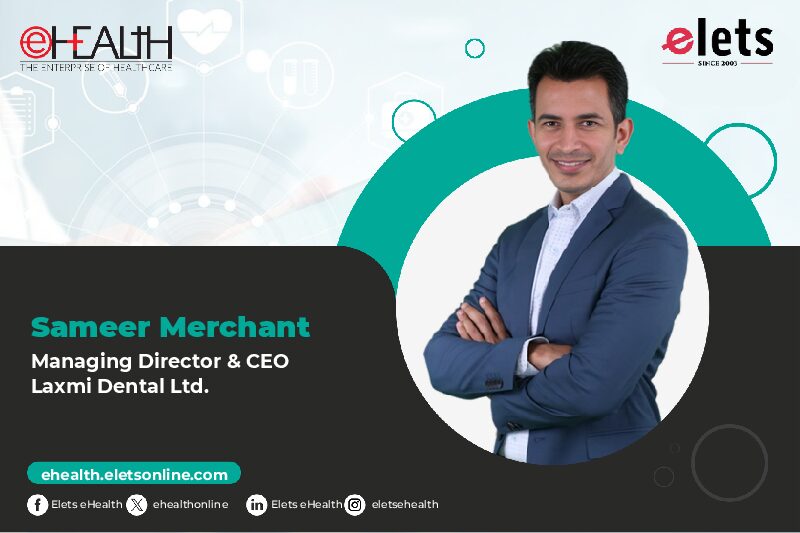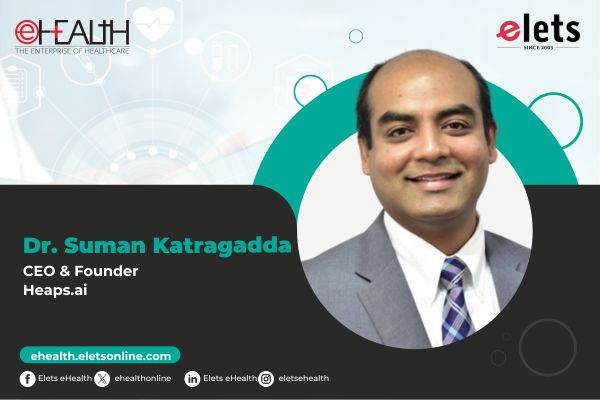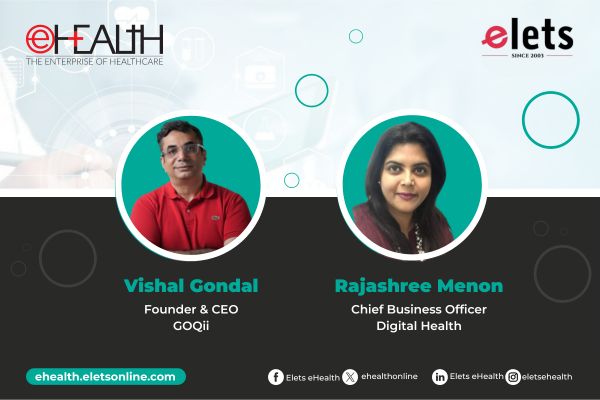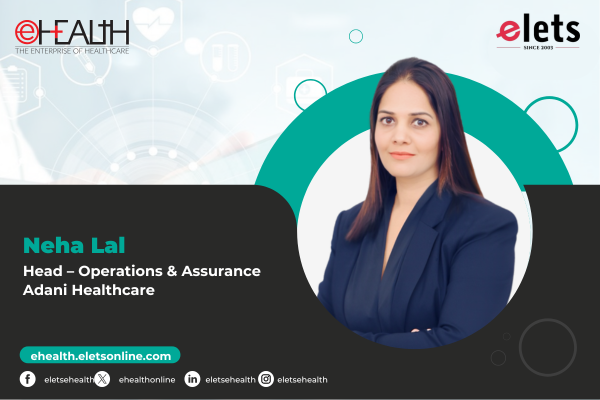Growth in the area of health information technology must happen on a foundation of open standards and formats
By Sachin Garg, Wg. Cdr. Mudit Mathur, Lt. Col. Salil Garg and Prabhu S. Srivastava

 Information technology is becoming pervasive and ubiquitous in the world around us. In healthcare, it is increasingly being used for both diagnosis and therapy. Further, eHealth and telemedicine in their various avatars are starting to be used in providing medical services to a large chunk of people in India’s rural and remote areas. It is hoped that this will ultimately improve the quality of medical care and bring down, costs as well. For this to happen, it is inevitable that open standards are leveraged. It will also be necessary to build systems that are simple to use by those who are not technically savvy. Another area of importance will be the need to prevent data lock-in. The US Congress has already decreed that patients have a right to see their health records and is starting to ensure that such records are portable, which means that all electronic records should be kept in open, documented formats.
Information technology is becoming pervasive and ubiquitous in the world around us. In healthcare, it is increasingly being used for both diagnosis and therapy. Further, eHealth and telemedicine in their various avatars are starting to be used in providing medical services to a large chunk of people in India’s rural and remote areas. It is hoped that this will ultimately improve the quality of medical care and bring down, costs as well. For this to happen, it is inevitable that open standards are leveraged. It will also be necessary to build systems that are simple to use by those who are not technically savvy. Another area of importance will be the need to prevent data lock-in. The US Congress has already decreed that patients have a right to see their health records and is starting to ensure that such records are portable, which means that all electronic records should be kept in open, documented formats.

These measures will allow users of an eHealth network to call other practitioners or connect with patients on their audio/video-conferencing systems to collaborate or consult, thus making medical care just a phone call away. Continuing in the same vein it implies that the medical attendants should be able to transmit images and other medical data in the simplest gadgets, such as a mobile, fax. The importance of open standards in eHealth is all about protecting the future of healthcare technology and safeguarding the investments made.

Open standards in eHealth
The promise of open formats and open standards is especially relevant in the area of eHealth because ICT solutions in this area are heavily data-driven, and these will be the key to providing quality healthcare. As noted by Garg and Mathur, open standards help to consolidate competing standards, increasing the aggregate pool of resources available for using them without the cost inefficiencies of a single vendor de facto. For suppliers, this helps to consolidate a larger customer base. Instead of picking the portion of customers using the proprietary standards you are equipped to support, you can instead offer products and services to a larger consolidated base of users. This also means that since in a networked system, interconnection, interoperability, scalability, security and privacy all depend on widely accepted, open standards and guidelines, and future equipment needs to retain compatibility with its forerunners, it is imperative that the data be stored in open and documented formats.

 Government has an important role to play in the proliferation of standards like the United States Federal Government which will be giving upto US $27 billion in incentive payments to those doctors, hospitals, and other providers that adopt and make meaningful use of standardised EHRs
Government has an important role to play in the proliferation of standards like the United States Federal Government which will be giving upto US $27 billion in incentive payments to those doctors, hospitals, and other providers that adopt and make meaningful use of standardised EHRs
According to Cerri and Fuggetta, the technology supplier cannot claim any right on the customers’ data and information or impose limitations and constraints on their manipulation. The customer must have the true possibility to switch to another supplier and to access its own information without being anyhow limited. If a programme stores user data in a proprietary format (e.g. for performance reasons), it must anyway be possible to export that complete data in an open format.
Without such safeguards it may be difficult to create large local consortia or regional, provincial, national or international teleHealth systems. It is also important to understand the impact of any Intellectual Property Rights claims on the proposed standards. Health Standards need to be truly open and not subject to being held hostage by any interested parties by way of IPR.
Standards proliferation
Twin concerns relating to standards include – who sets them and who uses them. Obviously a standard that is open but used by none is of no consequence. It is important that any standards setting be done in consultation with the end-users, which includes the private sector also. Else, Kesan’s worries about a real danger that the government might step in unquestioned and prematurely pick winning technologies (and in the process, losers) may become reality, leading to a divergence between the private and public providers, resulting in losses for all.
The best approach to achieve and ensure eHealth interoperability is by developing a holistic partnership between the public and private sectors. The government has vested interest in providing medical care in the remotest areas as well as to all citizens of the country irrespective of their financial status. On the other hand, the private sector is more interested in the returns-on-investment, which means that they will invest in technologies and standards that increase efficiency as well as expand the addressable market. We may thus be able to incorporate the technological and the medical finesse of these institutes with the holistic aim of providing reasonable medical care for all.
Another point that becomes extremely important for standards in a nascent area like eHealth is continuous evolution. As Krechmer has pointed out, standards should be supported till user interest ceases. This means that all standards must be continuously benchmarked against current technologies and upgraded or deprecated as the case may be.
Government has another important role to play in the proliferation of standards. It can incentivise standards adoption like the United States Federal Government which will be giving upto US $27 billion in incentive payments to those doctors, hospitals, and other providers that adopt and make meaningful use of standardised Electronic Health Records (EHRs).
Role of standards
Two widely used standards in the health industry are discussed here. One is used for image transmission and storage and the other for electronic health records.
DICOM
DICOM (Digital Imaging and Communications in Medicine) is the industry standard for transfer of radiologic images and other medical information between computers. Patterned after the open system interconnection of the international standards organisation, DICOM enables digital communication between diagnostic and therapeutic equipment and systems from various manufacturers. Such interpretable standards are important to cost-effectiveness in healthcare. DICOM users can provide radiology services within facilities and across geographic regions, gain maximum benefit from existing resources, and keep costs down through compatibility of new equipment and systems.
HL7
Health Level 7 is an all-volunteer, non-profit organisation involved in development of international healthcare standards. HL7 and its members provide a framework (and related standards) for the exchange, integration, sharing, and retri of electronic health information. HL7 is also used to refer to some of the specific standards created by the organisation (e.g., HL7 v2.x, v3.0, HL7 RIM). v2.x of the standards, which support clinical practice and the management, delivery, and uation of health services, are the most commonly used in the world. HL7 is an ANSI accredited SDO and is also accredited by ISO for the mutual issuing of standards.
HL7 focusses on application layer protocols for the healthcare domain, independent of lower layers. It specifies a number of flexible standards, guidelines, and methodologies by which various healthcare systems can communicate with each other. Such guidelines or data standards are a set of rules that allow information to be shared and processed in a uniform and consistent manner. These data standards are meant to allow healthcare organisations to easily share clinical information. For example, the HL7 Clinical Document Architecture (CDA) is an XML-based markup standard intended to specify the encoding, structure and semantics of clinical documents for exchange.
Remote cardiac telemetry
 Remote cardiac telemetry was developed to allow home ECG monitoring of patients with suspected cardiac arrhythmias. The clinical need to monitor outpatients has resulted in advances in technology that now allow us to monitor heart rhythms remotely through a wide variety of devices, including ambulatory external monitors, implantable event recorders, pacemakers, and cardioverter-defibrillators.
Remote cardiac telemetry was developed to allow home ECG monitoring of patients with suspected cardiac arrhythmias. The clinical need to monitor outpatients has resulted in advances in technology that now allow us to monitor heart rhythms remotely through a wide variety of devices, including ambulatory external monitors, implantable event recorders, pacemakers, and cardioverter-defibrillators.
Traditionally, ambulatory monitoring has been used to determine the cause of palpitations and syncope and, to a lesser degree, to identify ventricular ectopy or nonsustained ventricular tachycardia in patients at potential risk for sudden cardiac death. The rapid expansion of ambulatory monitoring technologies affords the clinician the obvious diagnostic advantage of more comprehensive and real-time data. Devices can record cardiac rhythm continuously or intermittently and can be worn externally or implanted subcutaneously. The new devices transmit recordings to a centralised monitoring station via telephone by converting an ECG signal into an audio signal and then uploaded to a personal computer for analysis. There is an intrinsic appeal to real-time access to potentially serious arrhythmias.
This is particularly true for patients those are being monitored for syncope or while starting an antiarrhythmic drug. In these instances, rapid access to data could result in clinically significant management decisions, and devices with real-time data access are preferred.
The problems are faced on compatibility to analyse the data from older machines, thereby ensuring that each time money and effort is invested in acquiring newer and expensive software. Moreover, data transmitted by one machine cannot be analysed by a machine of another company resulting in many a times deaths due to non availability of standards.
eHealth and telemedicine are an ever evolving field and as technology improves, so will its ambit. Today, we are looking at universal medical care for all and also good medical care, in which telemedicine will be at the forefront. However, it will require that newer technology is able to make medical care simpler and more accessible. To ensure that the mission of health for all is not subverted by interested parties, it is imperative that the technologies and data formats used are standardised. We should ensure that future standards are built on a foundation of existing open standards like TCP/IP, XML etc. and are well documented. For standards to be truly useful, they should be widely used and private-governmental partnership may play a very important role in the proliferation of such open standards.
About the Authors
Sachin Garg
Architect
Yahoo! India R & D
Wg. Cdr. Mudit Mathur
Commissioned Officer
Indian Air Force
Lt. Col. Salil Garg
Cardiologist – Army Medical Corps
Prabhu S. Srivastava
Architect
Navankur IT
Be a part of Elets Collaborative Initiatives. Join Us for Upcoming Events and explore business opportunities. Like us on Facebook , connect with us on LinkedIn and follow us on Twitter , Instagram.
"Exciting news! Elets technomedia is now on WhatsApp Channels Subscribe today by clicking the link and stay updated with the latest insights!" Click here!
















